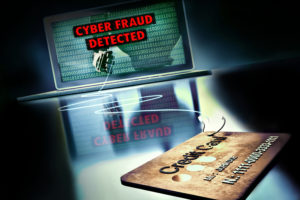Photo Credit: iStock/serpeblu
More than 80 percent of American adults now use computers or smartphones to do their banking – nearly one-third more than just two years ago. But many seniors continue to sit out of this growing trend.
True, a slight majority of those 65 and older don’t have home internet service. But millions who do still choose to remain old-school over online when it comes to banking, and only one in five retirement-aged smartphone users ever do mobile banking.
Why? Studies find that many older Americans typically cite two reasons for remaining holdouts: First and foremost, they enjoy the status-quo – preferring face-to-face banking at a local branch, getting monthly paper statements, and otherwise citing their “banking needs are met” without using a computer or smartphone. But nearly as many – nearly half of those surveyed – cite concerns about security. What to know:
- Yes, banks and other financial institutions are vulnerable to data breaches. But they don’t occur as often as you may think. So far this year, only 69 of nearly 1,100 breaches have occurred at any type of financial institution, and fewer than 2 percent of customer records were stolen – lower than any industry segment. Banks typically spend much more on online security than other corporations, and more are now transitioning their online services to .bank (versus .com) domain addresses, which must meet robust security technologies and are harder for cybercrooks to hack or mimic.
- Granted, receiving monthly account statements has advantages. Many seniors find it more convenient to open mail when it arrives than regularly have to access an online account to check. Mailed statements may also better help spot unauthorized charges, and serve as a permanent record in this era of bank mergers. While most banks prefer their customers “go paperless” to cut printing and mailing costs, many still provide mailed statements for the asking (albeit sometimes at a price of about $5 per month.) The disadvantages of mailed bank statements: They are ripe for identity thieves who steal incoming mail and outgoing trash. Prevent this with a lockable mailbox starting at around $40 and shredding any paperwork with account numbers and other personally identifiable information (PII) before discarding.
- Indeed, online banking can save (and get) you more money. In addition to gas costs driving to a bank, once there some charge a fee for using an in-branch teller to process some transactions. Meanwhile, because of reduced costs in real estate, utilities and personnel, online-only banks such as Ally, EverBank, Barclay’s and even internet-based divisions of traditional brick-and-mortar facilities typically pay higher interest on savings accounts.
If you choose to bank with a computer or smartphone (or already are), here’s how to do with more confidence and security:
- Be a “regular.” Even with mailed monthly statements, set aside a few minutes each day (or several times per week) to monitor your checking and savings accounts. This helps to spot potentially fraudulent transactions while activity is “fresh in mind.” And because bank-issued debit cards have weaker protections, you could be responsible for up to $500 unless you report fraudulent activity within two days. And if you don’t spot the fraud for more than 60 days, you could be responsible for the total amount fraudulently charged.
- Use your best password practices. Online banking is no place for weak passwords, so practice what is preached: Passwords should be a memorable pass phrase or sentence at least eight characters and up to 64 characters long (longer is stronger, as password length is the best contributor to its strength). Online “Password Checkers” help gauge strength, but a password manager is your best bet.
- Ensure two-factor authentication. Offered (if not required) by most banks, this often entails a unique image or key code after you sign in but before you enter your password. Some banks now offer a security token code with ever-changing codes after you register your smartphone.
- Use official bank apps, so information is encrypted and more secure than text messaging or email. You can usually download apps directly from your bank’s website; if not, ask your bank where you can get its branded or sanctioned app (most likely from a trusted app store).
- Never do online banking from a public Wi-Fi hot spot. Most don’t have encryption. Also, set your laptop, tablet or smartphone so that you have to manually select the Wi-Fi network.
- Employ smartphone smarts. Use a screen-locking PIN to protect access to online accounts if your phone is lost or stolen. (Avoid your birth date or birth year, as well as these most-hackables: 1234, 0000, 2580 1111, 5555, 5683, 0852, 2222, 1212 or 1998.) If not already activated, check with your wireless provider about features that let you remotely erase content or turn off access to your device and bank accounts if your phone is lost or stolen.
- Recognize the cons in correspondence. Legitimate phone calls, emails and text messages from your bank should address you by name, and include a portion of your account. Those addressed “Dear Customer” that allege account problems, or requests to verify or provide account information, are scams. No matter how convincing they may appear, never provide sensitive information until you contact your bank directly, looking up the phone number yourself.
For information about other scams, sign up for the Fraud Watch Network. You’ll receive free email alerts with tips and resources to help you spot and avoid identity theft and fraud, and keep tabs of scams and law enforcement alerts in your area at our Scam-Tracking Map.















